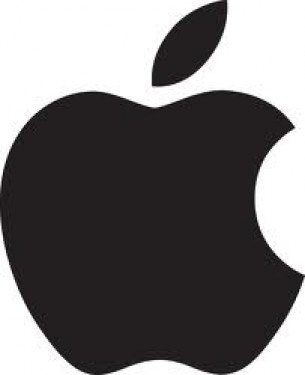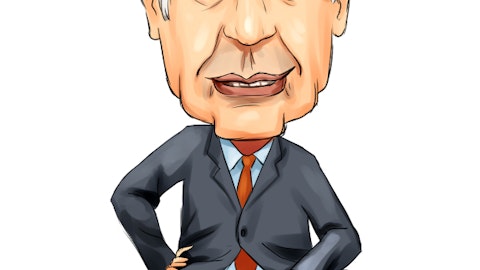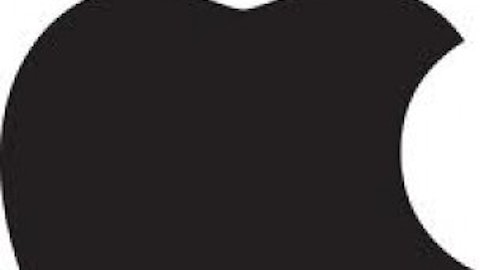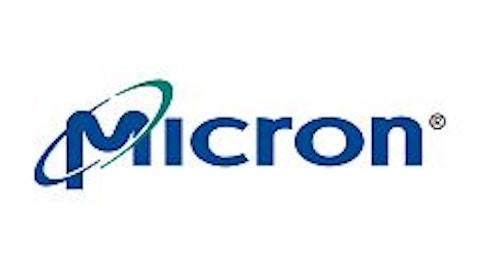Apple Inc. (NASDAQ:AAPL), as expected, released two new iPhones in its latest keynote presentation. Many analysts expected the rumored iPhone 5C to retail for a significantly lower price than previous models: What they got was a measly $100 discount.
Many analysts fear that it won’t be enough for the iPhone to compete in China, where phones are often unsubsidized and iPhones are undercut by cheaper domestic models. Indeed, Apple Inc. (NASDAQ:AAPL) has struggled recently to compete against models running Google’s Android OS in China. Its revenue in the country fell 14% year-over-year last quarter.
But as I’ve said before, Apple Inc. (NASDAQ:AAPL)’s best bet isn’t a cheaper iPhone. In fact, the 5C’s price point and the phase-out of the previous generation iPhone seems to quell a growing issue for Apple: More consumers are opting for older generation phones.

Many investors, including myself, worried that a low-cost iPhone would cannibalize sales. Yet the iPhone 4 and 4S have been doing just that for the last year. The iPhone 5 experienced significantly more cannibalization compared to previous models. As a result, the average selling price for the iPhone fell below $600 last quarter.
Replacing the iPhone 5 with the 5C in the iPhone product line aims to capitalize on this pattern. Instead of Apple offering just a premium product, it’s offering the “good enough” product that more consumers have been buying lately. In this way, it can maintain and even expand its margins as the cost of production for the 5C appears lower than the iPhone 5. (Changing the casing from aluminum to plastic saves the company an estimated $17 per phone.)
What this says about Apple
Apple’s new product positioning is management’s admission that perhaps one size does not fit all. It did something similar with the iPad mini, literally implying one size does not fit all, but this is a bigger departure from its previous product forks.
The iPhone 5C is different from the 5S, yet offers a similar user experience. The iPad mini can be used similarly to the full-sized iPad, but nonetheless offers a different experience with its smaller screen and lighter weight. The MacBook line has different delineations as well with the Pro being for power users and the Air being for commuters — different user experiences.
But the iPhone 5C is Apple Inc. (NASDAQ:AAPL) recognizing that it needs to capitalize on different market segments to continue growing its iPhone sales. Apple never before released a product that it didn’t consider the very best. The 5C isn’t the very best; the 5S is. But Apple recognizes that the 5S may be more than what the mainstream consumer needs. Where previously that was a relative non-issue for Apple, the iPhone is too popular for the company to grow sales without catering to the mainstream consumer.
The fact that Apple is shifting its focus while maintaining high margins is good for investors.
What about China?
Many expected the 5C to be Apple Inc. (NASDAQ:AAPL)’s answer to declining sales in China, but that doesn’t seem to be the case. At 4,488 yuan ($733), it’s significantly higher than what most Android smartphones from domestic manufacturers cost. Still, it’s less than the iPhone 5 sold for originally (5,000 yuan) and less than Samsung’s Galaxy S4 (5,199 yuan). This price and some new colors aren’t going to be enough to attract more middle-income consumers in China.
But Apple Inc. (NASDAQ:AAPL) doesn’t just want to sell phones; it wants to make money selling phones. Samsung, with its wide range of smartphones, barely makes a profit on its low-end phones. Its high-end phones, in the price range of the 5C and higher, are where it makes the vast majority of its profits.
Even on the high-end, Samsung is experiencing profit pressure as it attempts to capitalize on its biggest profit-maker with multiple lines of phones. Last quarter it reported increased costs for new product launches, higher R&D expenses, and more retail channel expenses leading to lower than expected earnings in the second quarter. Management also iterated that it expects “competition to intensify” in its earnings report.
So why should Apple try its hand at a low-margin, highly competitive market? It’s best for it to stick with high-end products, and go after the telecom companies. It successfully did just that with China Unicom and China Telecom in 2009 and 2012, respectively. And it received regulatory approval to run on China Mobile Ltd. (ADR) (NYSE:CHL)’s network this month, which puts Apple one step closer to closing a deal with the world’s largest wireless service provider.
A deal with China Mobile Ltd. (ADR) (NYSE:CHL) ought to come later this year as the company upgrades its network and rolls out its 4G LTE service. If the company agrees to subsidize iPhones, as China Telecom and China Unicom do, it could significantly boost iPhone sales in the country. Analysts see such a deal adding 10 million to 25 million additional iPhone sales next year, and up to 100 million additional iPhones by 2020.
Apple Inc. (NASDAQ:AAPL) has overcome the biggest hurdle, regulatory approval, now it just needs to work out the numbers with China Mobile Ltd. (ADR) (NYSE:CHL). China Mobile Ltd. (ADR) (NYSE:CHL)’s hesitation is understandable. For one, carrying the iPhone might increase the load on the network dramatically before it’s able to handle it. That could cause customer complaints and higher churn.
Moreover, during the first two years the company carries the iPhone, China Mobile Ltd. (ADR) (NYSE:CHL) will likely pay out significantly more subsidies, putting a damper on cash flow and profit growth for the company. China Unicom and China Telecom experienced a similar pattern.
Still, a deal seems close to happening. When it does, it ought to boost iPhone sales, as 35 million “gray-market” iPhones already operate on the China Mobile network.
Two is better than one
While Apple Inc. (NASDAQ:AAPL) is experiencing a sell-off on the news that the 5C is priced higher than expected and the company has yet to complete a deal with China Mobile Ltd. (ADR) (NYSE:CHL), I think management deserves commendation. It broke away from its usual business model, but didn’t sacrifice margins. Instead, it’s capitalizing on a growing trend it sees in smartphone consumers to improve its weakening (but still stellar) margins and average selling price.
For investors, now seems like a good opportunity to get into the stock with a 5% sell-off and the China Mobile catalyst looming.
The article Why the C in 5C Doesn’t Stand for “Cheap” originally appeared on Fool.com and is written by Adam Levy.
Adam Levy owns shares of Apple. The Motley Fool recommends Apple. The Motley Fool owns shares of Apple and China Mobile.
Copyright © 1995 – 2013 The Motley Fool, LLC. All rights reserved. The Motley Fool has a disclosure policy.





